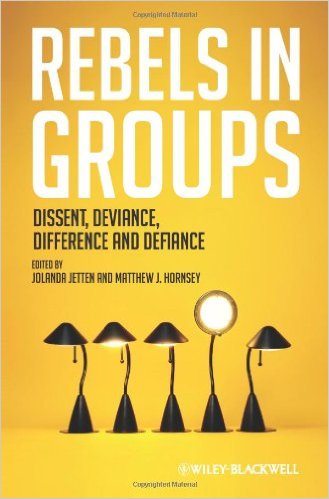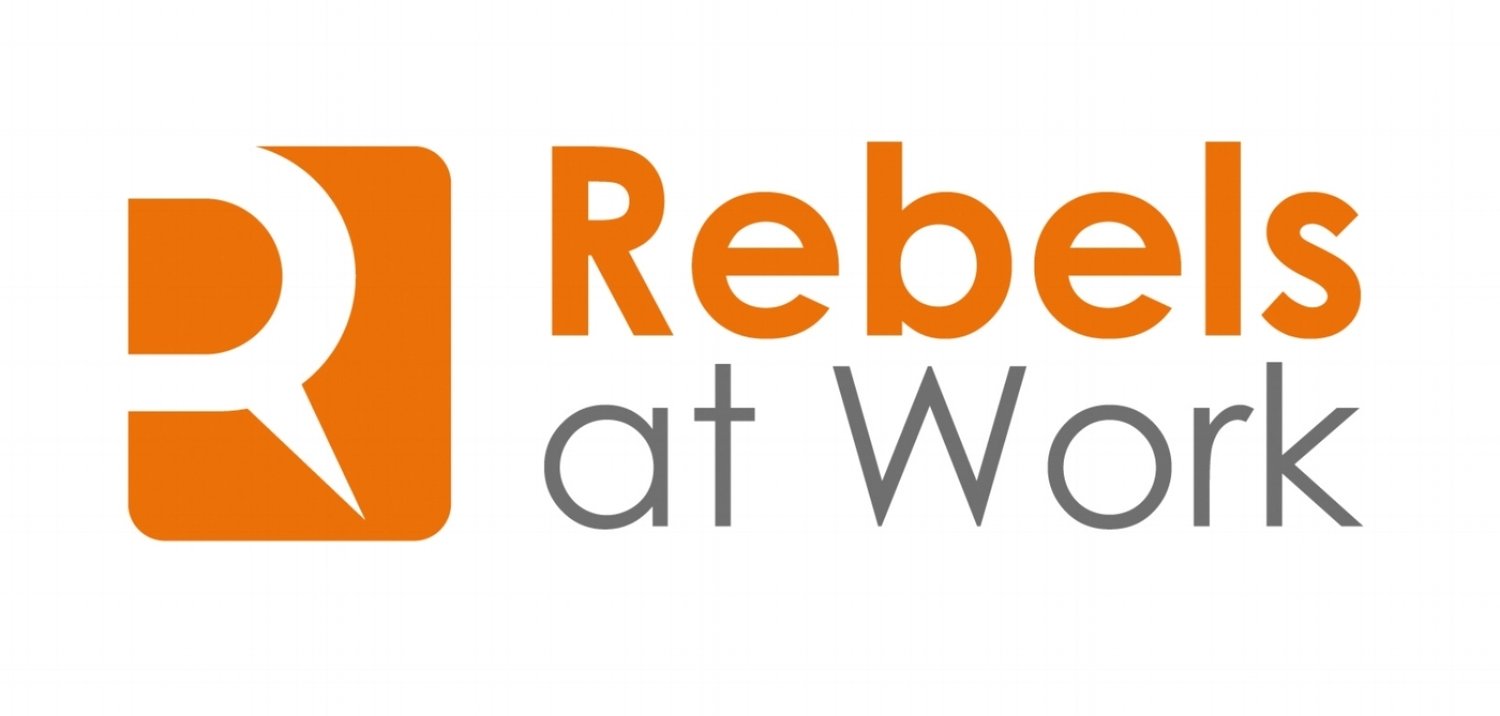This summer I’ve been making my way through an essential book for Rebels at Work called Rebels in Groups. Edited by Jolanda Jettsen and Matthew J. Hornsey, Rebels in Groups collects much of the most recent and compelling research on deviance, differences, and rebellion in groups. But unlike much of the previous social psychology research that emphasizes the tendency of individuals in group to conform, this book, to quote one reviewer: represents a paradigm shift in how we think about the individual and the group. It is a welcome re-balance of our collective belief that conformity reigns in groups, and instead invites 'rebels' back into social psychology. For anyone seriously interested in group processes, this is a must-read.
 I agree. The book collects almost 20 essays representing the work of researchers from several countries who examined how groups respond to rebels, the conditions under which deviant views can become majority views, and the impact that individuals in leadership positions have on the process.
I agree. The book collects almost 20 essays representing the work of researchers from several countries who examined how groups respond to rebels, the conditions under which deviant views can become majority views, and the impact that individuals in leadership positions have on the process.
I think Rebels in Groups was intended as a textbook. It’s priced accordingly and is not an easy, casual read. But it’s a rewarding one and I’ll be sharing the insights I gained in this and subsequent blog posts. I wish I had known this book existed before we published Rebels at Work but I can report that its findings support all the major learnings Lois Kelly and I convey. The one area of focus in Rebels in Groups that I realize now we could have emphasized more in our book is the value that rebels gain through better understanding of their colleagues—their fellow group members. We write in our book about the importance of forming a Rebel Alliance, your Rebel Wild Pack, and of understanding the organizational landscape. But I learned from Rebels in Groups that it’s critical for the rebel to figure out the common identity of your community/team (more on that in a subsequent post).
Why Deviance is Important
For this post, I’d like to concentrate on some of the pro-Rebel arguments in the book. Various contributors to Rebels in Groups point out that without defiance and deviance, human society would hardly progress and improve. Social change is essentially the product of collective deviance. As Dominic J. Packer notes in his essay: The Dissenter’s Dilemma, and a Social Identity Solution:
A growing literature is documenting contexts in and processes by which the expression of divergent viewpoints enhances group decision making, reduces polarization, and allows for more creative, productive, and ethical outcomes…From the opposite perspective, adverse group outcomes are often attributed to an absence of dissent – the failure to elicit, respect, and heed competing ideas. Dissent is, by this formulation, important to the healthy functioning of social groups…and a failure to allow for dissent may result in difficulty adapting to changing circumstances.
While reading this essay—one of my favorites, I was reminded of the pressure so many organizations place on their leaders to be commanding and authoritative. I know I sometimes heard the critique that I wasn’t “hard enough” on my reports—whatever that meant. But there are in fact studies suggesting that the most successful management teams encourage dissent. Charlan J. Nemeth and Jack A. Goncalo remind us in their essay Rogues and Heroes: Finding Value in Dissent of a landmark study from 1998 on groupthink in seven Fortune 500 companies. The study found that “the most successful management teams encourage dissent in private meetings.”
I didn’t take much convincing on that point, but one aspect of Rebels at Work I had never considered is the value they provide to organization even when they don’t succeed and they’re not correct. Yup! You read that right. Rebels at Work can make organizations better even when their ideas are wrong. As Nemeth and Goncalo observe “minorities…stimulate thinking that is divergent; people consider multiple perspectives.” “Those exposed to minority views come up with more creative solutions to problems.” This dynamic is particularly important in juries where researchers have found that minority views need to be protected not because “they may be right but because even when they are wrong they stimulate thinking that on balance leads to better decisions…There is evidence that people search for more information on all sides of the issues; they utilize more ways of looking at facts.” (Emphasis original.)
Finally, I’m copying below a table that appears in the book that reminded me of the “Good Rebel/Bad Rebel” chart that we’re famous for and with which Lois and I have a love/hate relationship. People everywhere glom on to the chart, except for those who hate its over-simplification of a complex topic. Lois and I find ourselves agreeing with both the fans and the haters. So I’m quite happy to introduce a new categorization scheme that I think provides additional clarity.
A (non-exhaustive) Sampler of Deviances* |
|
| UNINTENTIONAL | |
| Tail of the distribution | Random variation placing one just beyond the threshold of what is acceptable (e.g., a co-worker is ‘weird’ for liking a popular TV show just a little too much) |
| Norm shifting | Not realizing that norms have changed, making one a deviant for abiding to obsolete norms, or joining a new group where one’s old norm-abiding behavior no longer has currency |
| Ignorance | Not perceiving or understanding the norm |
| Inability | Not having the resources or ability to follow the norm (e.g., mental illness, low financial resources) |
| Duress | Being forced by external circumstances to break the norm (e.g., losing one’s job) |
| Compulsion | Not being able to help oneself, feeling compelled to break the norm |
| INTENTIONAL | |
| Principled disagreement | Refusing to follow a norm that one deems wrong |
| Disdain | Feeling that one is above the norm, not beholden to it. |
| Spite | Wanting to upset the mainstream, or a powerful minority |
| Desire for originality | Wanting to be at odds with a norm, non-conformist |
| Self-interest | Breaking the norm is rewarded so it is considered worth it despite potential social costs (e.g., crime) |
| *Source: Monin, Benoît and O’Connor, Kieran. “Reactions to Defiant Deviants: Deliverance or Defensiveness?” Rebels in Groups Ed Jolanda Jetten and Matthew J. Hornsey Wiley-Blackwell 2011 | |
As you can see in the chart, the authors sort rebels/deviants into intentional/unintentional. The intentional category touches upon many of the same qualities we’re trying to describe in our Good Rebel/Bad Rebel chart. Throughout Rebels in Groups, different researchers note that deviants and rebels who disagree with the majority because of principle are more influential than other types of rebels. But the keys to success for even principled rebels are many, and I’ll write more about what Rebels in Groups tells us about that issue in my next post.
